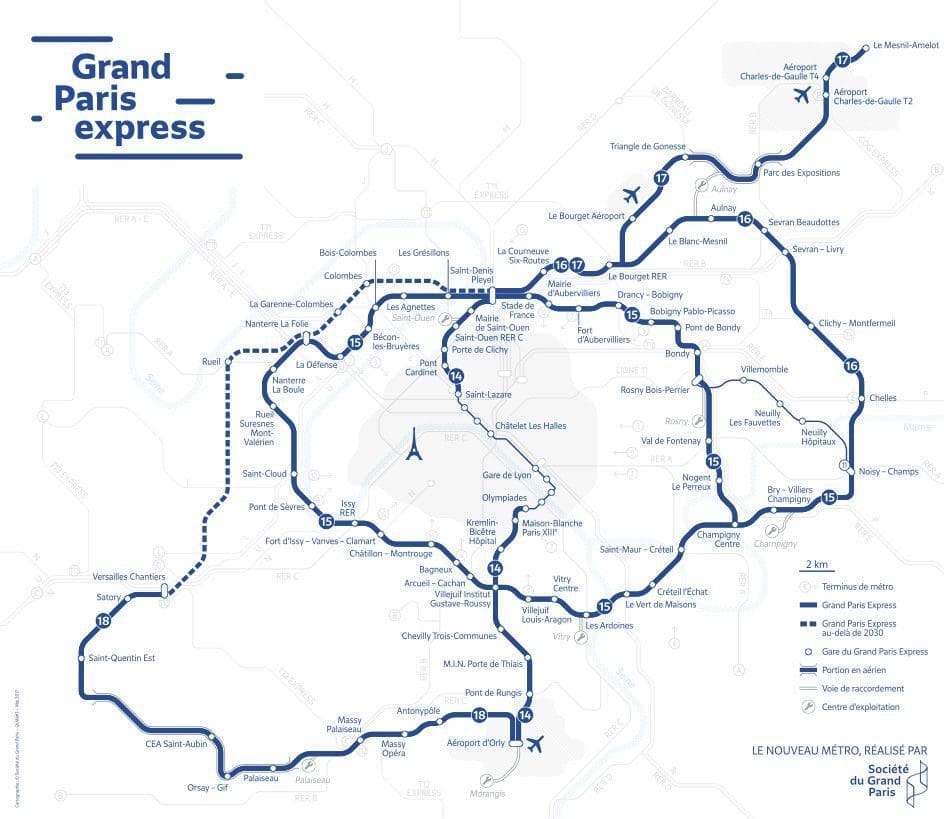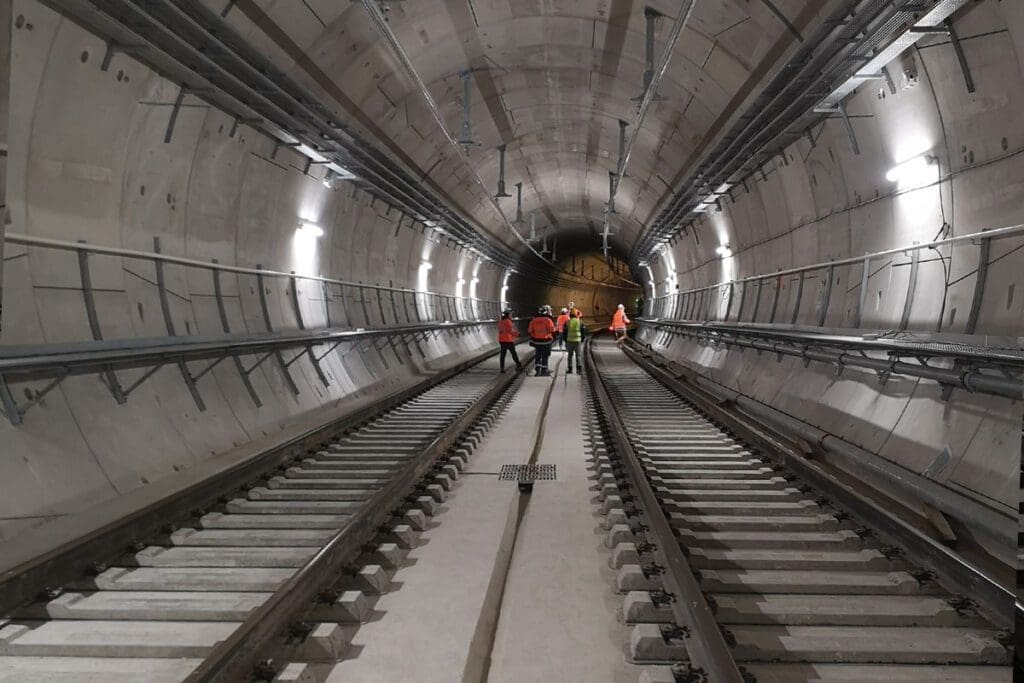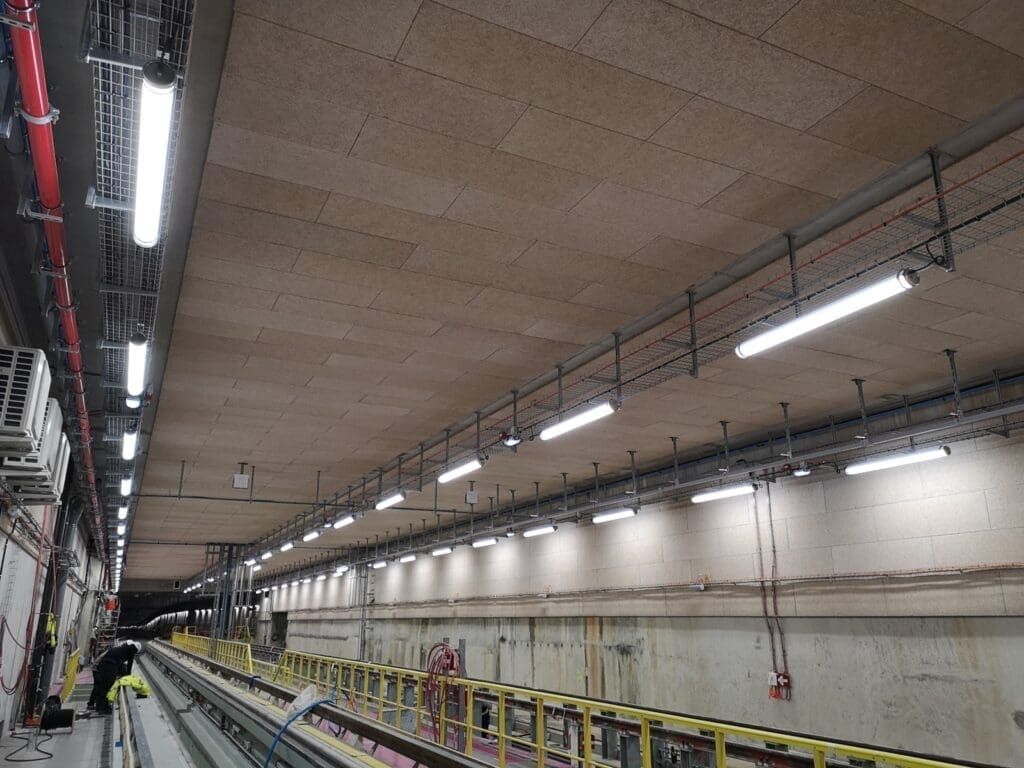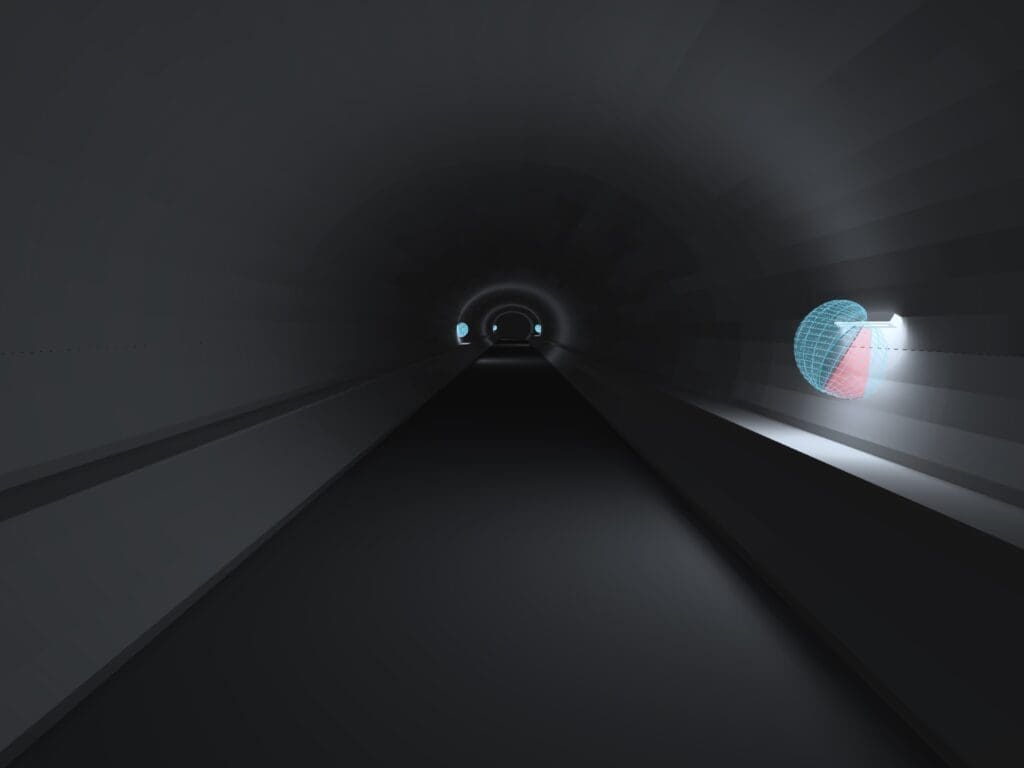Tunnel lighting: the constraints of the Grand Paris Express
Doubling the surface area of the Paris metro by 2024: this is the ambition of the Grand Paris Express (GPE), a vast 36.1 billion euro project to build four new metro lines around the capital (15, 16, 17 and 18) and to extend lines 11 and 14. The Société du Grand Paris, the GPE’s contracting authority, has to deal with one problem in particular: tunnel lighting. This is why it is relying on experts in the sector, such as Sammode, which has already won several lighting projects on portions of tunnels and on the LED transformation of tunnels on older lines.
The Grand Paris Express: a pharaonic project
The Grand Paris Express consists of building 200 km of new automatic metro lines, including four new lines (15, 16, 17 and 18) and the extension of two others (11 and 14). Led by the Société du Grand Paris, this large-scale project also aims to extend the RER E to the western suburbs and create 68 new stations (80% of which are connecting stations).
The goal is to reduce travel time from suburb to suburb and provide faster service between the three airports (Roissy, Orly, Le Bourget) and Paris. By 2024-2030, 2 to 3 million passengers will travel daily on the entire GPE network.

Lighting of the Grand Paris Express tunnels
According to the Société du Grand Paris, this 36.1 billion euro project must address various technical issues, such as tunnel lighting. The latter are indeed special areas where it is necessary to ensure the total safety of passengers, metros and the track to avoid accidents and ensure the smooth running of the service.
The lighting must be particularly resistant since it is first of all subjected to piston effects and strong vibrations when the subways pass. In addition to that, there is the inevitable dirt and dust when you are underground.

The Société du Grand Paris must also favour reliable lighting in order to minimise maintenance operations. Technicians are indeed obliged to work in places that are difficult to access, which may require the interruption of service or even night work.
At a time when energy conservation is the order of the day, it is also relevant to reduce operating costs by using durable, low-maintenance luminaires. Finally, there is the major issue of safety. The GPE tunnels must remain lit in all circumstances, especially in the event of evacuation.
There are therefore strong constraints related to the lighting of the Paris metro. To meet these requirements, the Grand Paris Express project owner must work with lighting specialists such as Sammode.
Sammode: manufacturer of durable luminaires adapted to the constraints encountered in tunnels
Already commissioned to light a number of GPE projects/portions (lines 4, 12, 14 North (LED transition), 15,16,17, RER EOLE (lighting of ventilation shafts, evacuation galleries) …) the French company has the know-how to enable the Société du Grand Paris to install some of the most efficient and durable luminaires on the market for underground lighting.
Like the flagship product Cugnot Xtrem, Sammode luminaires are resistant to all the constraints that can be found in RER and metro tunnels. First of all, they are resistant to shocks (IK10) such as ballast projections, for example. They are also insensitive to vibrations and piston effects thanks to the Screw system developed by Sammode.
These French quality products are also designed to contain electrical disturbances thanks to an extremely robust electronic driver. They are also designed and tested to withstand fire. Finally, they are protected against water projections, humidity (IP68) and high pressure cleaning (IP69K).
The fixtures are therefore robust, waterproof, functional and reliable. In short, they are durable. Guaranteed for 8 years (i.e. at least 70,000 hours of operation), they can be completely dismantled and repaired. Thanks to LEDs, the Paris metro and RER network can also reduce its energy consumption by 60% compared to traditional lighting. And up to 80% by using an intelligent lighting management system.

Lighting study and customized support
In addition to the intrinsic qualities of its products, Sammode provides tailor-made advice, such as lighting studies, enabling the Société du Grand Paris to manage its project more effectively (optimization of the number and location of light points, product dimensions, luminaires adapted to the identified constraints, etc.). The expert also optimizes the estimates in order to provide only the necessary lighting.



